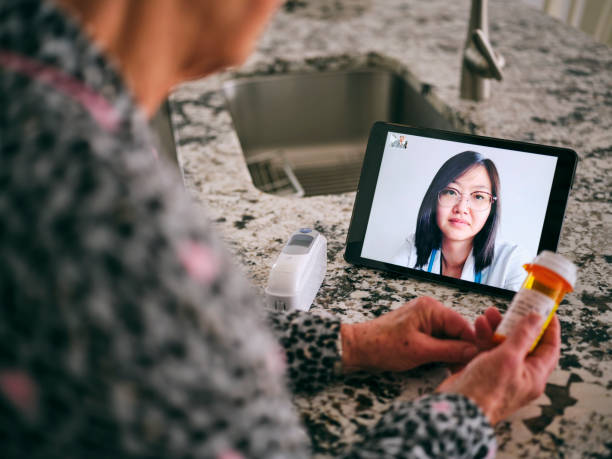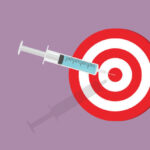Telemedicine has quietly yet profoundly transformed the healthcare landscape in recent years. As the healthcare industry continues to innovate quickly, healthcare providers, policymakers, and patients must stay informed on the new facts about telemedicine and healthcare industry research, trends, and developments.
This article presents 20 key fast facts about telemedicine, highlighting its growing significance and diverse impacts across the healthcare ecosystem.
20 Fast Facts About Telemedicine
The facts cover a range of areas – from market growth projections and innovations in virtual care delivery to the benefits of remote patient monitoring for chronic disease management and healthcare access disparities. These insights underscore telemedicine’s pivotal role in expanding access to care, empowering patients, and driving efficiencies in an increasingly digital-first healthcare system.
Fact #1 About Telemedicine
According to Exactitude Consultancy, the home healthcare market is anticipated to grow from $250.99 billion in 2024 to $511.42 billion by 2030, at a CAGR of 8.23% during the forecast period.
Fact #2 About Telemedicine
Children’s Hospital Los Angeles (CHLA) offers Virtual Urgent Care, an online option for California families with children/young adults up to 21 years old requiring after-hours care for non-emergency illnesses or injuries. Patients can video chat with CHLA providers from their devices.
Fact #3 About Telemedicine
Rural area residents, Native Americans, and Hispanic people face longer travel distances to see neurologists, potentially leading to delayed dementia diagnoses, higher care costs, reduced cognitive preservation, and lower quality of life for patients, according to a study of nearly 95,000 Washington state residents.
Fact #4 About Telemedicine
Healthcare Xpress reports that Medicare payments for the 4 most common RPM billing codes rose from $5.5 million in 2019 to $101.4 million in 2021, the most recent year in which data is available.
Fact #5 About Telemedicine
Remote monitoring services billed to Medicare grew from fewer than 134,000 in 2019 to 2.4 million in 2021, according to KFF Health News.
Fact #6 About Telemedicine
The Office of Disease Prevention and Health Promotion advises using clear language and intuitive design to improve digital health literacy. Additionally, guiding and evaluating sources can empower patients to navigate digital health resources better.
Fact #7 About Telemedicine
A study on RPM use in hypertensive patients aged 65 years and older showed that RPM use in older hypertensive adults reduced the risks of mortality and hospitalizations:
- A 34% lower hazard/risk of all-cause mortality than non-users [Hazard Ratio (HR) 0.66, 95% CI 0.60-0.74].
- A 22% lower hazard of any hospitalization [HR 0.78, 95% CI 0.75-0.82].
- A 21% lower hazard of cardiovascular-related hospitalizations [HR 0.79, 95% CI 0.73-0.87].
Fact #8 About Telemedicine
In a study spanning 34 months across 6 U.K. hospitals, 92% of 202 rheumatoid arthritis patients remained engaged in a remote monitoring system, with the impact of disease scores consistently above 80%. Patients reported improved access to care and empowerment in self-management.
Fact #9 About Telemedicine
According to research by Avalere, roughly two-thirds of the over 66 million individuals covered by Medicare are diagnosed with high blood pressure, making it the predominant health indicator under observation. Remote patient monitoring aids in efficiently monitoring patients with high blood pressure daily.
Fact #10 About Telemedicine
McKinsey & Company reports that retail pharmacies will continue facing “reimbursement challenges, labor shortages, inflationary pressures, and a plateauing of generics dispensing rates.” The American Pharmacists Association reports that “RPM can be used within the PCMH model to enhance patient care by collecting data on patients’ vital signs, physiologic markers, symptoms, and medication adherence, among others, which can then be used by the entire care team to make more informed recommendations for patients’ treatment and care.”
Fact #11 About Telemedicine
The U.S. Bureau of Labor Statistics estimates that more than 275,000 additional nurses will be needed between 2020 – 2030. Many health systems are addressing this concern and easing the burden on providers with remote patient monitoring.
Fact #12 About Telemedicine
WHO has introduced S.A.R.A.H., a digital health promoter leveraging generative AI, offering personalized health advice across 8 languages. S.A.R.A.H. engages users on various health topics, enhancing understanding and access to reliable health information.
Fact #13 About Telemedicine
A cross-sectional study analyzed data from the 2022 Health Information National Trends Survey and of 5,437 U.S. adults who had a healthcare visit, revealed:
- 43% of patients had a telemedicine visit in 2022 (2384 out of 5437 patients)
- Those with chronic conditions were 2.13x more likely to use telemedicine
- Those with 5+ visits were 3.29x more likely to use telemedicine
Fact #14 About Telemedicine
A BBC article spotlighted Mia, an AI system, detected 11 breast cancers missed by radiologists when analyzing 10,000 mammograms in an NHS study, highlighting AI’s potential to improve cancer screening accuracy.
Fact #15 About Telemedicine
In Feb 2024, UC Davis Health launched an at-home digital care program for post-angioplasty patients using a text messaging platform and RPM technology with a weight scale, blood pressure cuff, and health hub that transmits their vitals data directly to the clinical team. This program is set to monitor 200 patients daily with digitally-enabled care at home after patients leave the hospital.
Fact #16 About Telemedicine
In April 2024, Boston Medical Center launched a new hospital-at-home program that provides eligible patients with acute care services like daily clinician visits, around-the-clock remote monitoring, and virtual physician access, aiming to improve healthcare access and equity while delivering high-quality care more cost-effectively. The program utilizes technology from Medically Home to facilitate remote patient monitoring and connectivity with care teams.
Fact #17 About Telemedicine
A recent American Medical Association (AMA) report found that 74.4% of surveyed physicians indicated using telehealth in their medical practices last year. This figure represents a significant increase, nearly tripling the share observed in 2018. This highlights that telehealth remains widely available and underscores the need for policies that support this essential mode of healthcare delivery.
Fact #18 About Telemedicine
Movano Health launched commercial sales of its smart ring, the Evie Ring, in November 2023. The ring, designed for women, tracks biometric data such as sleep, heart rate, and blood oxygen levels.
Fact #19 About Telemedicine
Medscape reports that telemedicine reduced post-discharge hospital readmissions by 76% and unplanned revascularization by 67% in post-PCI acute coronary syndrome patients compared to standard care over 6 months.
Fact #20 About Telemedicine
A randomized controlled trial from two academic and two nonacademic centers in the Netherlands demonstrated reduced outpatient visits (one visit per year) and a 15% reduction in hospital admissions among patients who were randomized to MyIBDcoach versus standard care, with comparable quality of care between the groups.
Understanding Recent Facts About Telemedicine
The facts about telemedicine outlined in this article make it clear that telemedicine has become an indispensable component of modern healthcare, delivering on the promise of more accessible, personalized, and coordinated care. The continued advancement of telemedicine technologies, supportive policies, and greater patient/provider adoption will be critical to fully realizing its transformative potential. By closely tracking the latest telemedicine trends and best practices, healthcare stakeholders can effectively leverage this powerful tool to improve outcomes, reduce costs, and ultimately enhance the overall quality of care for patients.






